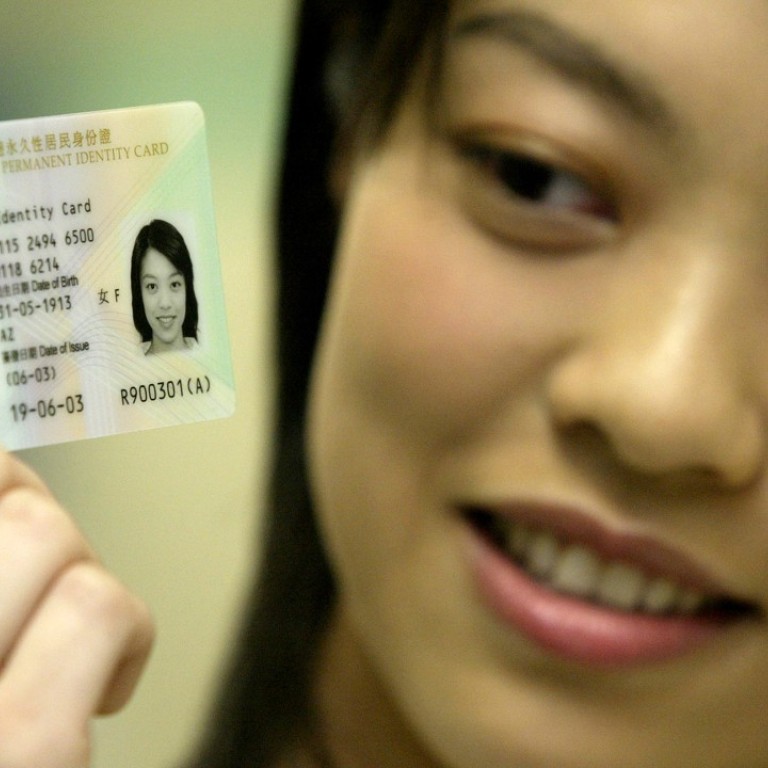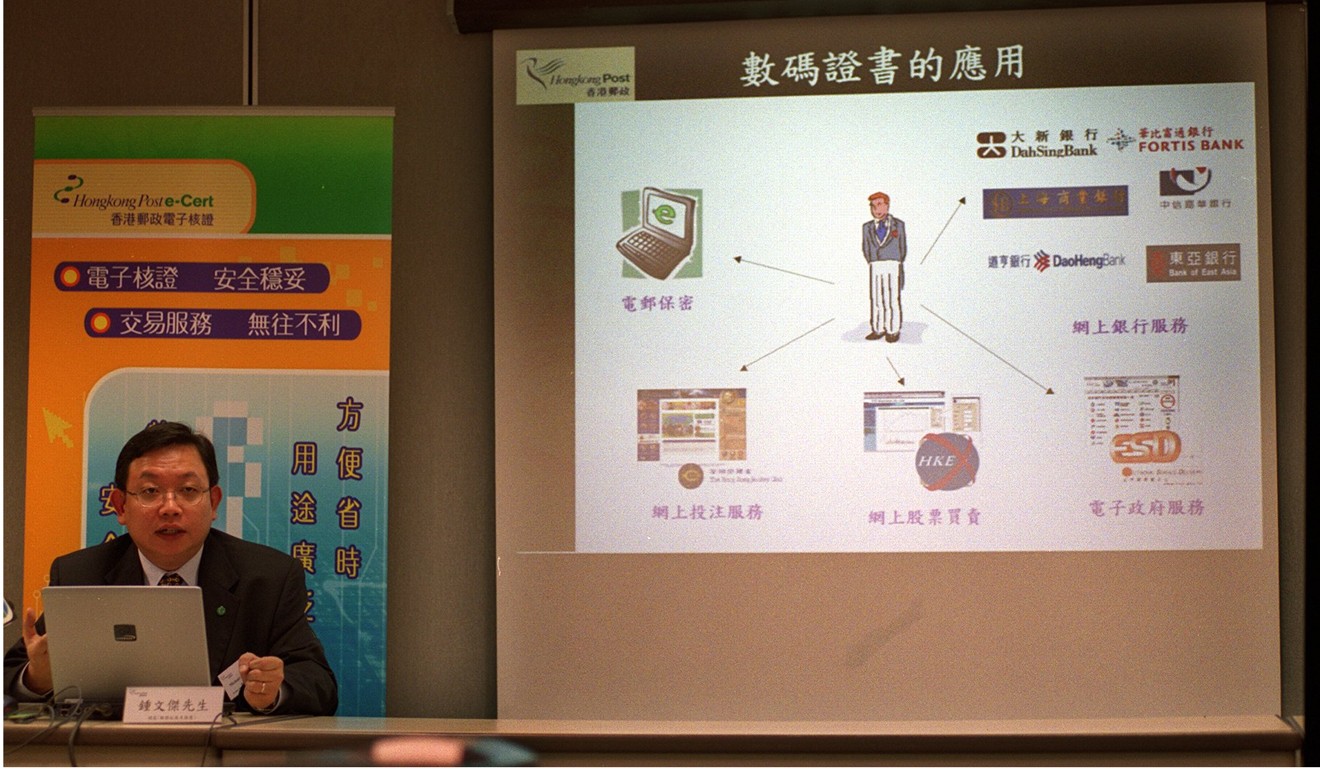
Hong Kong to roll out electronic identification in two years to boost e-transactions
But will city make the same mistakes it did in similar plan 17 years ago?
The government’s HK$100 million plan to issue “electronic identification” for Hong Kong residents to allow easier access to online public and commercial services parallels a similar plan unveiled 17 years ago that never took off as hoped.
The Post has learned that the new electronic ID is expected to be launched within two years. According to Secretary for Innovation and Technology Nicholas Yang Wei-hsiung, the e-ID will allow Hongkongers easier access to online services offered by the government and stronger safeguards of their personal data.
Yang said the e-ID would “foster the development of new economic service models that emphasise direct interface with residents and consumers”.
But similar hopes were echoed by the government in 2000 when it launched electronic certification (e-Cert). E-Cert was a digital certificate issued by a certification authority which verified a user’s identity during authentication of electronic transactions.

Then postmaster general Luk Ping-chuen said: “The main purpose of e-Cert is to support the government’s call for turning Hong Kong into a digital city,” similar to how e-ID is expected to push Hong Kong into becoming a “smart city”.
But e-Cert did not reach critical mass as few commercial entities used the service, and the complicated registration process, annual renewal fee and requirement of an external card reader frustrated users. These problems were acknowledged in a government consultancy study on the smart city concept released in June.
Hong Kong to launch new ‘electronic identification’ as part of ‘smart city’ blueprint
Even in government departments e-Cert use was limited, with only 32 out of 730 e-government services requiring e-Cert for user authentification or digital signing.
Chinese University faculty of engineering associate dean Professor William Wong Kam-fai warned that if the government did not learn from e-Cert’s failure, it could repeat the same mistakes.

“About 15 years ago, the government tried to push e-Cert but it didn’t fly. One of reasons was that applications and the interface were very user-unfriendly,” Wong said.
“It wasn’t about the code or the ID itself, it was about how you use it, and the interface was not really ready for it.”
However, Yang insisted that e-ID would succeed where e-Cert failed.
“In the old days you had to carry your ID with you with e-Cert in it, but today, because of the development of cloud technology ... you won’t have to carry an e-ID,” he said.
“All you have to do is go to a trusted source to get yourself identified, then that e-ID will connect you to every database that has your e-ID in it.”
Government to review e-Cert service, which still struggles 16 years after launch
Government Chief Information Officer Allen Yeung Tak-bun added that e-Cert was a “much narrower” technology compared with e-ID, as e-Cert could only provide digital signatures.
Information technology sector lawmaker Charles Mok said the government primarily needed to make e-ID simple to use and user-friendly in order to achieve success.

